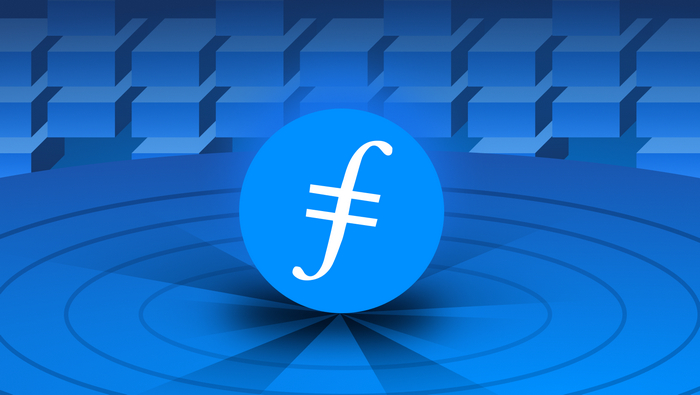-
 Bitcoin
Bitcoin $97,219.4672
1.63% -
 Ethereum
Ethereum $1,820.8950
1.13% -
 Tether USDt
Tether USDt $1.0001
0.02% -
 XRP
XRP $2.1327
-0.43% -
 BNB
BNB $602.3281
0.03% -
 Solana
Solana $147.7911
1.09% -
 USDC
USDC $0.9999
-0.01% -
 Dogecoin
Dogecoin $0.1725
1.12% -
 Cardano
Cardano $0.6706
0.13% -
 TRON
TRON $0.2489
1.41% -
 Sui
Sui $3.3512
1.53% -
 Chainlink
Chainlink $13.8526
1.44% -
 Avalanche
Avalanche $19.6299
-1.30% -
 UNUS SED LEO
UNUS SED LEO $8.7562
0.40% -
 Stellar
Stellar $0.2611
-0.23% -
 Shiba Inu
Shiba Inu $0.0...01279
1.26% -
 Toncoin
Toncoin $3.0266
0.40% -
 Hedera
Hedera $0.1765
0.37% -
 Bitcoin Cash
Bitcoin Cash $369.4993
2.08% -
 Hyperliquid
Hyperliquid $21.1995
1.68% -
 Litecoin
Litecoin $89.5955
4.54% -
 Polkadot
Polkadot $3.9568
0.63% -
 Dai
Dai $1.0002
0.01% -
 Monero
Monero $282.5473
-1.06% -
 Bitget Token
Bitget Token $4.2199
-1.10% -
 Ethena USDe
Ethena USDe $1.0007
0.03% -
 Pi
Pi $0.5835
0.91% -
 Pepe
Pepe $0.0...08266
4.18% -
 Bittensor
Bittensor $367.8815
0.84% -
 Uniswap
Uniswap $4.8814
-0.32%
What can FIL coin be used for? What is the future prospect of FIL coin?
Filecoin (FIL) empowers users to store and access files securely by leveraging a decentralized network of independent storage providers, offering resistance to data loss and censorship.
Oct 14, 2024 at 02:12 am

What Can FIL Coin Be Used For?
Filecoin (FIL) is a decentralized storage network that allows users to store and retrieve files in a secure and reliable way. Unlike traditional cloud storage services, Filecoin is not controlled by a single entity, but rather by a network of independent storage providers. This makes it resistant to censorship and data loss.
FIL coins are used to pay for storage space on the Filecoin network. The cost of storage is determined by the amount of space required, the duration of the storage period, and the reliability of the storage provider.
Filecoin can be used for a variety of purposes, including:
- Cloud storage: FIL can be used to store files of any type, including photos, videos, documents, and software.
- File backup: FIL can be used to back up important files in case of a computer failure or data loss.
- Archiving: FIL can be used to archive data for long periods of time, such as historical records or scientific data.
- Content distribution: FIL can be used to distribute content, such as videos or podcasts, to a wide audience.
What is the Future Prospect of FIL Coin?
The future prospect of FIL coin is positive. The demand for decentralized storage is growing rapidly, as businesses and consumers become increasingly concerned about the security and privacy of their data. Filecoin is well-positioned to capitalize on this growing demand, as it offers a secure, reliable, and affordable storage solution.
In addition, Filecoin is supported by a strong team of developers and a vibrant community. The team is constantly working to improve the network and add new features. The community is also actively involved in developing applications and services that make it easier to use Filecoin.
As a result of these factors, the price of FIL coin has been rising steadily over the past year. Many analysts believe that FIL coin has the potential to continue to grow in value in the years to come.
Here are some additional factors that support the positive future prospect of FIL coin:
- The global cloud storage market is expected to grow to $146 billion by 2026.
- The demand for decentralized storage is growing rapidly, as businesses and consumers become increasingly concerned about the security and privacy of their data.
- Filecoin is a secure, reliable, and affordable storage solution that is well-positioned to capitalize on the growing demand for decentralized storage.
- Filecoin is supported by a strong team of developers and a vibrant community.
Disclaimer:info@kdj.com
The information provided is not trading advice. kdj.com does not assume any responsibility for any investments made based on the information provided in this article. Cryptocurrencies are highly volatile and it is highly recommended that you invest with caution after thorough research!
If you believe that the content used on this website infringes your copyright, please contact us immediately (info@kdj.com) and we will delete it promptly.
- Tron (TRX) is catching the market's attention with its current price of $0.244, holding steady above its key support level of $0.24
- 2025-05-08 06:45:13
- Bitcoin Could Be Getting Closer to Having a Place at the Government Table
- 2025-05-08 06:45:13
- Don't Miss BTFD at $0.0002—Next Crypto To Explode with 8900% ROI as PENGU Goes Walmart and SNEK Gets Global!
- 2025-05-08 06:40:13
- US Large-Cap Sustainable Funds Have Lost 5.93% of Their Value Year-to-Date
- 2025-05-08 06:40:13
- Shiba Inu (SHIB) Burn Rate Drops by 87%, Only 320814 Tokens Destroyed Today
- 2025-05-08 06:35:14
- Quant (QNT) Price Surged Past $88 as Investors Bought the Dip
- 2025-05-08 06:35:14
Related knowledge

Is Ethereum Layer2 fee low? How to use it cheaper?
May 08,2025 at 03:56am
The question of whether Ethereum Layer 2 solutions offer lower fees and how to use them more economically is a topic of great interest within the cryptocurrency community. Ethereum's Layer 2 solutions have been developed to address the high transaction fees and scalability issues associated with the main Ethereum network. In this article, we will delve ...

How to calculate Ethereum network fee? How to reduce transaction costs?
May 08,2025 at 02:15am
Understanding and managing Ethereum network fees is crucial for anyone involved in transactions on the Ethereum blockchain. The network fee, also known as gas fee, is the amount of Ether (ETH) required to successfully conduct a transaction or execute a smart contract on the Ethereum network. Calculating these fees and finding ways to reduce them can sig...

What is Ethereum Gas Fee? How to optimize Gas Fee to save costs?
May 08,2025 at 03:43am
Ethereum gas fees are a crucial aspect of interacting with the Ethereum blockchain. Understanding and optimizing these fees can significantly impact the cost-effectiveness of transactions and smart contract interactions. In this article, we will delve into what Ethereum gas fees are, how they are calculated, and provide detailed strategies for optimizin...

How to perform MOVE cross-chain transfer? What to do if the gas fee is too high?
May 07,2025 at 08:03pm
Introduction to MOVE Cross-Chain TransferCross-chain transfers have become an essential part of the cryptocurrency ecosystem, allowing users to move assets between different blockchain networks. One of the popular protocols for achieving this is the MOVE cross-chain transfer. This article will guide you through the process of performing a MOVE cross-cha...

How is the DYDX liquidation price calculated? How is the forced liquidation mechanism?
May 08,2025 at 06:49am
The DYDX liquidation price and the forced liquidation mechanism are crucial aspects of trading on the dYdX platform, a decentralized exchange that allows users to trade perpetual contracts. Understanding these concepts is essential for managing risk and maximizing potential returns. In this article, we will delve into the details of how the DYDX liquida...

Does DYDX support cross-chain? Is the transfer speed fast?
May 07,2025 at 05:56pm
Introduction to DYDXDYDX is a leading decentralized exchange (DEX) that primarily operates on the Ethereum blockchain. It is known for its advanced trading features, including perpetual contracts and margin trading. A common question among users is whether DYDX supports cross-chain functionality and how fast the transfer speeds are. In this article, we ...

Is Ethereum Layer2 fee low? How to use it cheaper?
May 08,2025 at 03:56am
The question of whether Ethereum Layer 2 solutions offer lower fees and how to use them more economically is a topic of great interest within the cryptocurrency community. Ethereum's Layer 2 solutions have been developed to address the high transaction fees and scalability issues associated with the main Ethereum network. In this article, we will delve ...

How to calculate Ethereum network fee? How to reduce transaction costs?
May 08,2025 at 02:15am
Understanding and managing Ethereum network fees is crucial for anyone involved in transactions on the Ethereum blockchain. The network fee, also known as gas fee, is the amount of Ether (ETH) required to successfully conduct a transaction or execute a smart contract on the Ethereum network. Calculating these fees and finding ways to reduce them can sig...

What is Ethereum Gas Fee? How to optimize Gas Fee to save costs?
May 08,2025 at 03:43am
Ethereum gas fees are a crucial aspect of interacting with the Ethereum blockchain. Understanding and optimizing these fees can significantly impact the cost-effectiveness of transactions and smart contract interactions. In this article, we will delve into what Ethereum gas fees are, how they are calculated, and provide detailed strategies for optimizin...

How to perform MOVE cross-chain transfer? What to do if the gas fee is too high?
May 07,2025 at 08:03pm
Introduction to MOVE Cross-Chain TransferCross-chain transfers have become an essential part of the cryptocurrency ecosystem, allowing users to move assets between different blockchain networks. One of the popular protocols for achieving this is the MOVE cross-chain transfer. This article will guide you through the process of performing a MOVE cross-cha...

How is the DYDX liquidation price calculated? How is the forced liquidation mechanism?
May 08,2025 at 06:49am
The DYDX liquidation price and the forced liquidation mechanism are crucial aspects of trading on the dYdX platform, a decentralized exchange that allows users to trade perpetual contracts. Understanding these concepts is essential for managing risk and maximizing potential returns. In this article, we will delve into the details of how the DYDX liquida...

Does DYDX support cross-chain? Is the transfer speed fast?
May 07,2025 at 05:56pm
Introduction to DYDXDYDX is a leading decentralized exchange (DEX) that primarily operates on the Ethereum blockchain. It is known for its advanced trading features, including perpetual contracts and margin trading. A common question among users is whether DYDX supports cross-chain functionality and how fast the transfer speeds are. In this article, we ...
See all articles





















































































